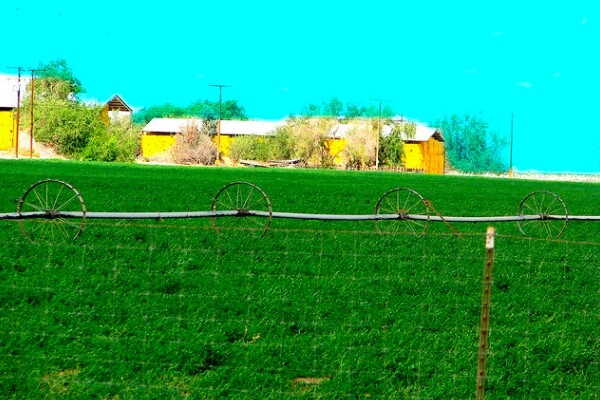Where Food Fits in the Proposed U.S. Budget

As Newton's Law states, "for every action there is an equal and opposite reaction." That concept ties neatly into how Beltway prognosticators look at the financial tea leaves of every White House budget proposal. What are the Obama Administration's priorities when it comes to spending tax dollars? More importantly, what programs are seen as unnecessary albatrosses to be placed on the ol' chopping block? With the recent release of the proposed $3.77 trillion 2014 budget, it's time to wade through all 244 boring pages of spreadsheets to figure out just how the country is going to invest in our most vital resource: Food.
The biggest piece of food expenditure news is not about how it's dealt with within our country's borders, but instead regards how the U.S. will be distributing aid to impoverished foreign countries. Rather than using the old style of providing assistance by simply growing food here and shipping it overseas, the new budget calls for a more ambitious and cost-effective approach, by allocating almost half of the $1.4 billion to purchase food produced in or near the starving countries themselves. In other words, the new policy can be summed up in those two beautiful words that we love around these parts: Buy locally.
The advantages of this are two-fold: First, instead of under-cutting the local agriculture business by shipping in free food -- which does nothing to help the local economy get out of the dire straights it's in -- the program will help grow the foreign nation from the inside out. Now, the program is part of an actual healing process and not than just a bunch of Band-Aids air-dropped in. Secondly, the plan drastically cuts the cost of the entire program, seeing as the cost of shipping is gone. The entire savings are estimated to be somewhere in the neighborhood of 30 percent, meaning the proposed budget goes further (feeding an additional 4 million children over the old method) and faster (feeding impoverished countries 14 weeks more quickly than before). In all, the new plan seems like a slam dunk.
But money doesn't grow on trees. (Yet, at least. Get to work, scientists!) So in order to fund other proposals, and to trim the budget in general, there are quite a few cuts throughout. Agriculture, for one. While the proposal calls for a total of $145.8 billion in spending, that's a 5.9 percent decrease from 2013. The big savings come from cutting subsidies paid directly to farmers. According to the U.S. News and World Report, "The Obama administration says many of these subsidies can no longer be justified with the value of both crop and livestock production at all-time highs." The proposal will reportedly save the country $37.8 billion over the next decade. That said, U.S. News also points out that President Obama, and George W. Bush before him, have been constantly trying to get cuts similar to this passed every year, and in each instance Congress went ahead and ignored the proposal. So this is a case of wait-and-see.
In regards to the Supplemental Nutrition Assistance Program (the new fancy name for food stamps), once again the biggest part of the agriculturally-focused budget, the Obama administration's trying to allocate $80 billion toward them in 2014. To give you some sense of proportion, the U.S. spent a record $80.4 billion in food stamps in 2012, so that number seems to be in the "more of the same" category.
The FDA also got themselves into the mix by requesting a grand total of $4.7 billion for 2014. Of that, the biggest expenditure, by far, is the $295.8 million they want in order to create a "strong, reliable food safety system." (Of that total, $252.4 million will be coming from fees paid by the industry in general, with a mere $43.4 million (*snicker* "mere") coming from the federal government.) Most of that will be used to fund the recently-implemented Food Safety Modernization Act which "provides authorities and mandates for the FDA to build a modern, prevention-focused domestic and imported food safety system to protect the health of American consumers." As usual in the case of government programs, that sure does sound good. But whether or not it's actually effective will be a judgement left to historians.
Before that though, the entire proposal has one giant hurdle left to jump over: Congress.


